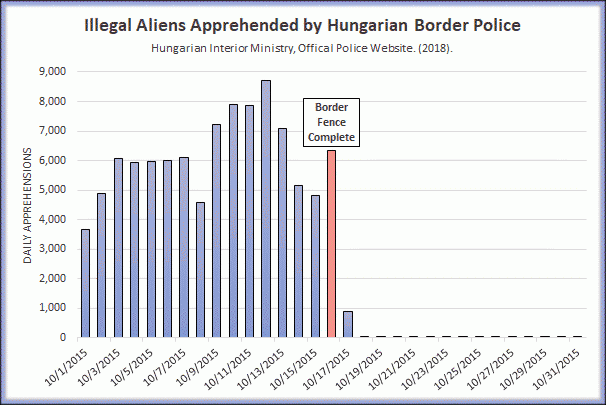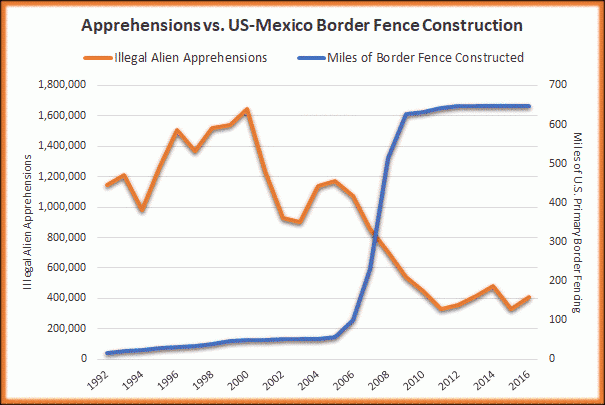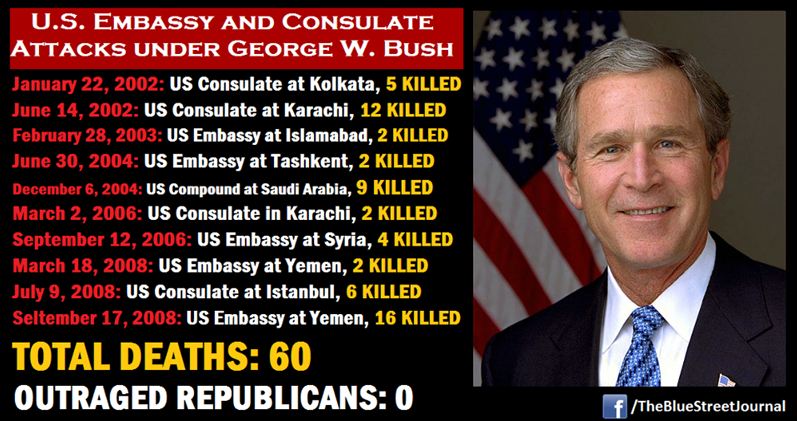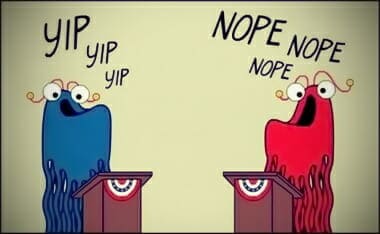- Trumps position has been the same as the Border Patrols on what they need
- Reagan wanted a stronger border AND small government
- Illegal aliens really do commit more crimes than legal residents
- and, Walls do work
First, I want to start with a video from a Prager University flashback to the giant named Charles Krauthammer:
A compatriot on Facebook who is a #NeverTrumper posted a link to this article at the biased* WASHINGTON POST, entitled, “Trump’s wall is a monument to vanity and bigotry,” and then asked for the following:
- Read this and THEN tell me why a wall (as described by Trump) makes sense. Feel free to comment if you have read the piece here by Michael J. Gerson.
I read the article and commented on it… here are some of my thoughts (I will add to the original comments for my site).
SAME POSITION
There are many issues with the article. A few being as follows, that Trump long ago said the Border Patrol wanted something different in parts and he would listen to them. He has also said a while back (during the campaign) that the BARRIER would be about a 1,000 miles long, again – some wall, and reinforcing fencing etc. Here, NPR (January 26, 2017) interviews the Border Patrol’s union leader Brandon Judd >>>
JUDD: I don’t think it’s going to be – well, OK, it’s going to be a lot more secure. But what we’re talking about is we’re talking about a wall in strategic locations. We’re not talking about a great wall of the United States. We’re not talking about a continuous wall from California down to Texas. We’re talking about a wall in strategic locations which then helps the Border Patrol agents do their job better.
INSKEEP: Because there are some places that are so sparsely populated and the ground is so fierce or so harsh you really don’t need…
JUDD: Correct, correct.
INSKEEP: So you’ve told us when you were on the program last time that about 10 to 15 percent of the border has serious fences in your view and maybe you’d double that under this proposal.
JUDD: That’s what I’m thinking. Again, I don’t have the exact specifics of what they’re going to do, but I do know that they’re looking in specific places like Laredo, Texas, where we have very, very little walls. Yet, the state that Laredo, Texas, borders is extremely violent. And so we’re looking in locations like that. They’re looking in locations like that, but I think it’s going to be very effective.
I post this clarification of the political hyperbole (on both sides) because the WaPo article refers to AN MIT ARTICLE discussing the cost of a 1,000 mile 50-foot wall. For all of Trump’s bluster, which the Left and #NeverTrumper’s take literally, like skeptics insist literalness in all places of the Bible instead of understanding hyperbole, and texts that do and do not incorporate it, such as: law text, history texts, wisdom literature, Hebrew poetry, prophecy, apocalyptic writing, and war texts. It would be like me reading EXODUS 15:8 and positing that God has a BIG nose, or reading PSALM 91:4 and saying God is a giant chicken. Many Christians would reject a skeptics misunderstanding in these areas (at least Christians true to a healthy hermeneutical approach to the Word).
Here is Brandon Judd in a more recent interview. Notice his position is the same, and in alignment with Trump:
A better article is this one by Byron York, entitled, “Why not build a border barrier? It’s the law.” Here is a sample from that article”
First, understand the problem. In California, the migrants are targeting a part of the border where there is a barrier. But much of the border’s 1,954 miles remains uncovered. According to the Border Patrol, 354 of those 1,954 miles are protected by what is called a pedestrian primary fence, which is a single-layer fence. Another 37 miles are a pedestrian secondary fence, that is, double-layer fencing. And 14 miles are pedestrian tertiary, or a triple-layer fence. In addition, 300 miles are covered by vehicle fencing, which will stop a truck but allow anyone to walk through with no problem.
That is a total of 705 miles — 405 miles of some kind of pedestrian fencing and 300 miles of vehicle fencing.
No one, or almost no one, says a fence should cover all 1,954 miles of the border. A significant part of the border is terrain so dangerous and imposing that it would be very difficult for migrants to cross. During the campaign, and during his presidency, Trump called for a wall along about 1,000 miles.
“We have 2,000 miles [of border], of which we really need 1,000 miles, because you have a lot of natural barriers,” Trump said in August 2016.
But Democrats oppose even that. And since Republicans could not pass wall funding when they controlled all of Congress and the White House, how could they possibly do it now, with Rep. Nancy Pelosi, D-Calif., in charge of the House?
Still, there is one possible course for Republicans. It is Public Law 109-367, better known as the Secure Fence Act.
The Act was passed by big, bipartisan majorities in 2006, receiving 283 votes in the House and 80 in the Senate. It required the federal government to build reinforced fencing, at least two layers deep, along about 700 miles of the border. It specified the areas in California, Arizona, New Mexico, and Texas where fencing would be installed.
If the law had been followed, many vulnerable parts of the border would now be secured. But the very next year, 2007, after Democrats won control of the House and Senate, Congress amended the Secure Fence Act. The amendment said that “nothing in [the original legislation] shall require” the installation of fencing if the government determines that a fence is not the “most appropriate” way to secure the border……
Do I wish Donald Trump would communicate his ideas more thoughtfully and cogently? Of course. I am also an adult who realizes he must excoriate language to get to the real meaning of the points made by this administration — not use hyperbole to make an embroidered political statement back at Trump (a hyperbolic position). Something our border residents do not need.
REAGAN’S CITY
In another section of the WaPo article,
- The era of limited government is emphatically over in the only political party where it once had some appeal. …. This is the strange case of a political metaphor slipping off the page and trying to break into reality. The images and symbols of political rhetoric can assume an importance beyond language. Ronald Reagan’s evocation of a “shining city on a hill” rooted his appeal in the American exceptionalism of our Pilgrim parents. …. But no one actually proposed getting the building permits for Reagan’s city…
The facile mantra I often hear is that “Reagan wanted to tear down walls; Trump wants to build.” WHAT NONSENSE!
- For the record, liberals often falsely and inaccurately quote Reagan’s farewell address, in which he explained what he meant about the “shining city.” Yes, America was a nation of immigrants, but liberals fail to note his city had “walls” and “a door.” …. Reagan believed in borders, in earned American citizenship. He did not believe in breaking the law to get ahead.
It is a rejection of our broader concepts involved in our political history and battles thereof. In this regard, I have no idea why Michael Gerson would invoke Reagan? He wanted to spend money to reinforce the border along his Shining City. This is the most unlearned portion of the article. History is not the forte of the Left. Here is a reminder of Reagan regretting trying to make a deal with the Democrats from another post of mine. Reagan didn’t regret “amnesty,” he regretted TRUSTING THE DEMOCRATS who did not live up to securing the border ….. sound familiar? Larry speaks with John Heubusch of the Reagan Presidential Foundation and Institute:
THE STREAM has this excellent article,
- What Trump Could Learn From The Reagan Immigration Amnesty: The Reagan Amnesty Of 2.7 Million Illegal Immigrants Was Paired With The Promise Of Controlling The Border
Of which I excerpt a portion of:
…In his book, Reagan: The Life, H.W. Brands writes about the president’s interpretation of a 1986 immigration bill at the time.
“Al Simpson came by to see if he had my support,” Reagan recorded in October 1986, shortly after the measure cleared the House. “They have one or two amendments we could do without, but even if the Senate conference can’t get them out, I’ll sign it. It’s high time we regained control of our borders, and this bill will do it.”
The legislation at the time was widely viewed as an enforcement-first measure, said then-Attorney General Edwin Meese III, who advised Reagan on the matter along with other Cabinet officials.
“It is very definitely a teachable moment,” Meese, the Ronald Reagan distinguished fellow emeritus at The Heritage Foundation, told The Daily Signal, when asked how the 1986 legislation might inform President Donald Trump in his negotiations with congressional Democrats on codifying the Deferred Action for Childhood Arrivals (DACA), implemented by his predecessor.
The Reagan amnesty of 2.7 million illegal immigrants was paired with the promise of controlling the border and penalizing employers who hire illegal immigrants. The legislation was better known as the Simpson-Mazzoli Act, named for its sponsors, Simpson and then-Rep. Romano Mazzoli, D-Ky.
The problem with the 1986 law was that the promised enforcement didn’t occur, but the amnesty did, Meese said….
President Reagan’s Remarks at Signing Ceremony for Immigration Reform and Control Act in Roosevelt Room. November 6, 1986
Steven Hayward, a historian and Reagan biographer, continues the idea in a DAILY SIGNAL, .
- “I think President Trump has to insist that employment E-Verify, funding for serious border security, not necessarily a wall, and an end to chain migration have to be non-negotiable conditions of any deal,” Hayward said. “Reagan should have applied to immigration what he said about arms control with the Soviet Union, ‘Trust, but verify,’ or in this case, ‘Trust, but E-Verify.’ That’s the lesson Trump should take.”
The article mentioned that a better law for seasonal workers would work. Trump is not saying he doesn’t want this? Dumb. However, that would work better with the barrier.
The old days of Union leaders like Cesar Chavez going down to the border and beating migrants up (or the current rape and abuse of migrants by criminals — on and/or living in parts of the journey up here) will decrease dramatically with better border control. Both Hillary and many of the candidates running for the Dems have said they prefer a borderless America. Something any sovereign nation should fear.
CRIME STATS
Another glaring misstatement by the WaPo article is based off of this claim:
- “Never mind that violent crime rates among migrants are significantly lower than among the native-born.”
This just is not true. The WASHINGTON TIMES notes a more thorough study when they say conclusively that the “crime rate among illegal immigrants in Arizona is twice that of other residents, Attorney General Jeff Sessions said Friday, citing a new report based on conviction data.” NATIONAL REVIEW rightly notes that John Lott used “more recent and comprehensive state data, found that illegal immigrants are far more likely to commit crimes than lawful residents.”
A SSRN STUDY by John R. Lott published in February 2018 found that from 1985-2017 illegal aliens had a 163% greater chance of being convicted of 1st degree murder than Arizona citizens. Illegals had a 168% greater chance of being convicted of 2nd degree murder than an Arizona citizen.
Continuing in another article, NATIONAL REVIEW says the following:
John Lott recently published a study that examines the incarceration of illegal immigrants in Arizona. Lott found that over the past 33 years, illegal immigrants have constituted an average of 4.8 percent of Arizona’s population. Yet during that same 33-year period, illegal immigrants constituted 11.2 percent of those convicted of crimes in Arizona — more than twice their share of the population. Lott found that illegal immigrants were dramatically more likely to be convicted of a homicide-related offense than either native-born Americans or legal immigrants during that 33-year period — 163 percent more likely to be convicted of first-degree murder and 168 percent more likely to be convicted of second-degree murder. “Undocumented immigrants were also consistently more likely to be convicted of manslaughter, armed robbery, sexual assault of a minor, sexual assault, DUI or DWI, and kidnapping.” Lott also found that illegal immigrants who met the age requirements for DACA were overrepresented in the prison population.
The Washington Post and the Left and #NeverTrumpers like to quote CATO Institutes study and Snope’s study refuting John Lott’s work. However, he has thoroughly responded to these works. Here are two examples — followed by others:
https://crimeresearch.org/2018/02/responding-catos-attacks-research-regarding-crime-illegal-immigrants/
https://crimeresearch.org/2018/01/long-discussion-washington-post-new-research-crime-illegal-aliens/
- Illegal Immigrants and Crime (National Review)
- Examples of Serious Crimes By Illegal Aliens (FAIR)
- Crimes By Illegal Aliens, Not Legal Immigrants, Are The Real Problem (The Hill)
Between 4,000 and 6,000 people are murdered a year by illegal aliens (THE HILL & TIGER DROPPINGS). Remember, Obama declared a State of Emergency and stopped immigration over 4,000 deaths from H1N1.
WALLS WORK
When Gerson says the following,
- Proposing a wall is really an argument that America can protect itself from the dangers of the world at its national boundaries. But this theory failed to contain the disorders of Europe and East Asia in the 1930s and 1940s.
He goes on to note the Cold War and terrorism. Even going so far as saying to end his article, “putting our faith in a wall requires us to unlearn the bloodiest lessons of the last century. And to repeat them.” WTH?
This is just silly.
First, walls throughout history have worked. Even during the Cold War. For instance, the wall built by Communists in Germany… worked. The wall and the “rampart” slashed defections to just 185 people per year. (All of the following comes from AMERICAN RENAISSANCE):
The reinforcing of the border barrier (16-foot-tall barrier [barbed wire fence] ran 152-miles) between Egypt and Israel worked as well. The 2013 upgrade reduced illegal incursions at the border by an average of 99.4 percent. The improvements completed in January 2017 cut illegal immigration to zero. As of June 2017, not a single person had breached the fence. Here is a graph noting the drop:
The wall separating the West Bank and Israel worked as well. By 2012, 63 percent (277 miles) of the border was walled (25 feet high) or fenced. They have not built past the 63% mark:
In July 2015, Hungary began building a 13-foot-tall fence along its borders with Serbia and Croatia. This barbed wire enforced fence accomplished it’s goal:
LIKEWISE, as the length of the southwest barrier increased—evidence that even a limited barrier can deter illegal immigration:
Simply put, Walls Work:
Michael Gerson basically said wall don’t work. But they do. That is, if you look to the real world and not “experts.” The Border Patrol say they work. Again [sigh],
When charges of “racism” and “xenophobia” fail, Democrats’ fallback argument against President Trump’s proposed border wall is that it simply “won’t work,” so why waste billions building it? Tell that to the residents of El Paso, Texas.
Federal data show a far-less imposing wall than the one Trump envisions — a two-story corrugated metal fence first erected under the Bush administration — already has dramatically curtailed both illegal border crossings and crime in Texas’ sixth-largest city, which borders the high-crime Mexican city of Juarez.
In fact, the number of deportable illegal immigrants located by the US Border Patrol plummeted by more than 89 percent over the five-year period during which the controversial new fence was built, ……..
The Border Patrol wants the same thing Trump does. An NBPC’s survey of more than 600 agents in two of the Border Patrol’s busiest sectors confirmed this: A stunning 89 percent of line agents say a “wall system in strategic locations is necessary to securing the border.” Just 7 percent disagreed.
To conclude my comments, I would have to say that only someone who has a bad taste for reality would say this is a good article. From using Reagan, to saying barriers don’t work, to not understanding what Democrats really want, etc., This is the low bar the Washington Post sets.
Sad. Sad that thinking Reaganite’s fall for it.
* Financial and readership decisions + dislike of Trump: “trump” civility and truth.
…former executive editor of the New York Times says the paper’s news pages, the home of its straight-news coverage, have become “unmistakably anti-Trump.”
Jill Abramson, the veteran journalist who led the newspaper from 2011 to 2014, says the Times has a financial incentive to bash the president and that the imbalance is helping to erode its credibility.
[….]
“Though Baquet said publicly he didn’t want the Times to be the opposition party, his news pages were unmistakably anti-Trump,” Abramson writes, adding that she believes the same is true of the Washington Post. “Some headlines contained raw opinion, as did some of the stories that were labeled as news analysis.”
What’s more, she says, citing legendary 20th century publisher Adolph Ochs, “the more anti-Trump the Times was perceived to be, the more it was mistrusted for being biased. Ochs’s vow to cover the news without fear or favor sounded like an impossible promise in such a polarized environment.”
Abramson describes a generational split at the Times, with younger staffers, many of them in digital jobs, favoring an unrestrained assault on the presidency. “The more ‘woke’ staff thought that urgent times called for urgent measures; the dangers of Trump’s presidency obviated the old standards,” she writes.
Trump claims he is keeping the “failing” Times in business—an obvious exaggeration—but the former editor acknowledges a “Trump bump” that saw digital subscriptions during his first six months in office jump by 600,000, to more than 2 million….
(FOX NEWS)




















